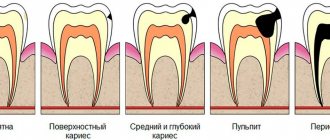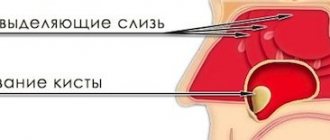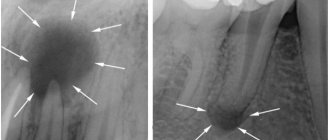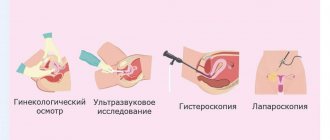Toothache can be caused by various reasons, including dental granuloma, which without proper and prompt treatment can lead to the tooth having to be removed. Therefore, you should never endure toothache, because only in a dental clinic can a dental granuloma be detected and treated.
What is a dental granuloma, what are its symptoms, does a granuloma require mandatory tooth extraction, and what methods are used to treat it in modern dentistry? All these questions will be answered by the material on our website dedicated to the treatment of dental granuloma. What is it - tooth root granuloma?
Dental granuloma is the name of an inflammatory process that affects the connective tissue (periodontal) in the area of the root apex. With the development of inflammation, the structure of the periodontium changes and a dense sac is formed in it - a granuloma. The granuloma is so tightly attached to the apex of the tooth root that it comes out of the gum when the diseased tooth is removed only together with the tooth.
YOU NEED TO REMEMBER: Many people think that a dental cyst and a dental granuloma are the same thing. But that's not true. When a dental cyst forms, a sac also forms, but it is hollow and as the cyst develops it will gradually fill with purulent fluid. A granuloma is a dense sac of inflamed tissue. Also, a granuloma will differ from a cyst in its size. Dentists call granulomas formations up to 0.5 cm in diameter. If the formation has a larger diameter, it is already a cystogranuloma.
What does a dental granuloma look like?
The photos and x-rays that we post below will help you see what a dental granuloma looks like.
Diagnosis of pathology
If granuloma occurs in the mouth, this diagnosis is confirmed by a dentist. If the formation has grown inside the gum, instrumental diagnostics are indispensable. To determine the exact location, an x-ray examination is required.
It is imperative to send the nodular neoplasm for histological examination. This will help accurately determine the diagnosis, and most importantly, exclude a malignant nature. Often the biological material is cut out completely, that is, not partially, but the tooth granuloma is completely removed.
What causes dental granuloma: the main reasons
There are two main reasons for the formation of granulomas:

1. Untreated pulpitis or inflammation of the nerve of the tooth. With pulpitis, the infection penetrates the nerve of the tooth and if it is not treated, the nerve will die and the pain will stop for a while, but the inflammatory process will not. The infection will continue to spread and travel through the root canals to the root of the tooth. When inflammation begins at the apex of the tooth root, periodontitis occurs, one of the forms of which is dental granuloma.
YOU NEED TO REMEMBER: Very often on dental forums the question is asked: can a granuloma occur under a filling or crown, because the tooth seems to have been cured and the inflammatory process in it has been stopped? This question can be answered this way: if the tooth treatment was performed poorly, then a dental granuloma may well develop both under the filling and under the crown. If the dentist, when working with a tooth, does not remove all tissues affected by caries, the inflammatory process will continue to develop and sooner or later will move to the root part of the tooth.

2. The second reason for the formation of granulomas is the poor quality of root canal filling. This procedure is necessarily carried out when depulping a tooth and, if mistakes are made in it, a granuloma can also appear on a tooth with a removed nerve. The tooth canals must not only be thoroughly cleaned, but also be properly filled with filling material.
The cause of the occurrence and development of dental granuloma can be non-compliance with medical recommendations after complex dental treatment. For example, if during treatment the gums were injured and the dentist prescribed the patient a course of anti-inflammatory therapy and rinsing, and the person decided to ignore these instructions, the infection could get into the open wound and trigger the development of a granuloma.
Very rarely, granulomas occur after tooth trauma or after poorly performed orthodontic dental treatment.
YOU NEED TO REMEMBER: Often people choose dentistry for dental treatment based solely on the prices of services. This is wrong; you need to choose a clinic for the treatment of dental granuloma and other dental diseases according to other criteria - the level of equipment, the competence of the specialists working in it. Our dentistry in Moscow - VENSTOM - has created all the conditions for high-quality, painless and comfortable dental treatment!
Reasons for appearance
Granuloma appears only because an inflammatory process occurs in the soft tissues that hold the tooth - periodontitis. But the appearance of periodontitis may be preceded by the following factors:
- Untreated dental caries that has turned into pulpitis. Any perforation (hole in a tooth) leads to the penetration of bacteria and other pathogenic organisms into the hole, causing a destructive process.
- Insufficient oral hygiene.
- Unsatisfactory antiseptic measures taken after root canal cleaning or tooth extraction.
- Cooling affecting the oral cavity.
- Various viral diseases that a person suffered “on his feet”.
- Reduced level of immunity caused by lack of sleep, stressful situations, irrational and unbalanced nutrition, overwork.
- Systemic diseases leading to weakening of the body.
- Hormonal imbalances – occurring during pregnancy, adolescence, menopause in women.
Symptoms of dental granuloma
Dental granuloma is a rather insidious disease, since it can develop for many years and not show itself in any way. Therefore, in the early stages of development, a dental granuloma can only be detected in the dentist’s office, and not during an examination, but after an x-ray, on which the darkening characteristic of a dental granuloma in the area of the root apex will be clearly visible.
With chronic granuloma, pain in the teeth is an extremely rare occurrence, but sometimes when biting or chewing food, mild pain may appear in the area of the affected tooth, and the tooth may also ache noticeably after consuming hot food or drinks. These unpleasant sensations pass fairly quickly, but if you notice similar symptoms, it’s time to see a doctor for diagnosis and treatment of dental granuloma.
Why should chronic dental granuloma be treated urgently? It’s simple: sooner or later, chronic granuloma will turn into an acute form, which has bright and pronounced symptoms. In the acute form of dental granuloma, the following symptoms are noted:
- Strong pain. The pain of dental granuloma is excruciating and intensifies when biting the tooth;
- Swelling of the gums in the area of the tooth with granuloma;
- General weakness, increased body temperature.
What happens if you don’t see a doctor for treatment of dental granuloma during an exacerbation? The granuloma may return to a chronic form, but severe purulent swelling (flux) and other complications may also occur. Therefore, regardless of the form of the granuloma, its treatment must be carried out!
PREVENTION
Preventive measures must be carried out in a complex manner. They should be aimed at preventing the occurrence of the disease. Preventive actions include the following:
- Constantly maintaining cleanliness of the oral cavity. That is, this is daily, high-quality cleaning and rinsing.
- Treat bleeding gums.
- Scheduled visit (2 times a year) to the dentist.
- Change your toothbrushes regularly to avoid spreading infections in your mouth.
- The slightest pain in a tooth should prompt the patient to immediately go to the hospital. The process cannot be delayed.
- Pay special attention to diseases such as caries, pulpitis and periodontitis, which are common causes of granuloma.
- Use only medicated toothpastes as a preventive measure.
- Regularly rinse your mouth with herbal decoctions.
- Eat food with the maximum content of calcium, trace elements and vitamins.
Tooth granuloma: what to do?
If, based on some signs, you suspect that you have a dental granuloma, make an appointment with your dentist as soon as possible. Treatment of granuloma should only be carried out by a specialist! We will explain in detail below why you should not self-medicate.
Why can’t dental granuloma be treated with antibiotics at home?
Antibiotics are used to treat dental granuloma - you can read about this on the Internet, on the websites of dental clinics. But under no circumstances should this information be taken as a direct guide to action. Firstly, you need to make sure that you have a dental granuloma and not some other disease, and secondly, you need to choose the right antibiotic.
In addition, just taking an antibiotic to treat dental granuloma is not enough - you need to treat the root canals of the tooth, and this cannot be done at home.
Will folk remedies help with granuloma?
Experimenting with folk remedies for dental granuloma also risks your own health. You need to remember one very simple thing: no decoction, infusion or compress will remove or cure the inflammation located in the root part of the tooth. Treatment of dental granuloma can only be carried out by a dentist, who should be contacted if you have symptoms of this disease!
What does diagnostics include?
A standard examination of the patient's oral cavity is not always

allows you to determine the presence of granuloma. If it is small and does not cause pain, neither the doctor nor the patient will suspect its presence.
An accurate diagnosis can be made using radiography. If you take a picture of the top of a tooth that is in doubt, then everything will immediately fall into place. Radiovisiography can also confirm the presence of a granulomatous zone.
Treatment methods for dental granuloma: how dental granuloma is treated in dentistry

Treatment of dental granuloma usually involves conservative therapy, during which the tooth canals are treated, their temporary filling is carried out for up to 3 weeks, and only after the image shows the cessation of the inflammatory process of the tooth - permanent filling of the canals and restoration of the tooth with a filling.
But in some cases, when a dental granuloma is diagnosed, surgical treatment is performed. Usually, surgical treatment of a tooth with granulomas is resorted to when there is obstruction of the dental canals, the impossibility of unsealing the canals, the treatment of which was carried out previously and was of poor quality, when a crown is installed on the tooth, or when there is a pin in the tooth canals.
Below we will look in detail at all methods of treating granuloma and start with conservative therapy.
Scheme of therapeutic treatment of dental granuloma
Therapeutic treatment of dental granuloma can take place according to different scenarios, depending on whether the root canals of the diseased tooth were previously treated or not. Let's consider both options in detail.
Treatment of granuloma on a tooth whose canals have not been filled previously
1. The treatment area is anesthetized and waterproofed with a rubber dam.
2. Using a drill, the dentist removes old fillings and damaged tooth tissue, while gaining access to the canals, which must be carefully processed for high-quality treatment of dental granuloma.
3. The channels are expanded with special tools - files and washed with an antiseptic solution.
4. Further treatment regimen will depend on the size of the granuloma. If they are small, the canal can be filled immediately, but if the granuloma has managed to grow to 3-5 millimeters, a medicine is put into the tooth canals that destroys the infection and stops the inflammatory process. This material will remain in the tooth canals for 2-3 weeks, after which the patient comes to the dentist again.
5. At the second visit, a control photograph of the tooth with granuloma is taken, which shows whether the treatment gave the desired positive result or not. If everything is normal, the dentist removes the medicinal material and performs permanent filling of the tooth canals and restoration of the tooth with a photopolymer filling.
Treatment of granuloma on a tooth whose canals were previously filled
In this case, treatment of dental granuloma will begin with unfilling the canals and only then the doctor will perform all the manipulations that we described above. If there is a crown on a diseased tooth with granuloma, it will need to be removed before treatment. After the granuloma is cured, the tooth is again covered with a crown, but keep in mind that the old crown cannot be placed - a new prosthesis will have to be made.
If you want to cure granuloma, but would not like to spend money on replacing the crown, then you can consider the option of treating granuloma with surgery - root resection.
Help from qualified specialists
You should only contact those dental specialists whose work you can be completely confident in. This will guarantee complete elimination of the problem and avoid the resumption of the tooth’s purulent process.
Specialists at the med-stom.com clinic will help solve any problem, including curing granuloma.
Highly qualified doctors will be able to perform any manipulation, including all of the above surgical methods. At the same time, they will do everything to preserve the integrity of the dentition.
If the patient applies in the early stages, then doctors will restore the enamel as a preventive measure. This will help prevent the occurrence of caries and other negative processes associated with it.
In order to get acquainted with the services provided by the med-stom dental clinic, you can go to the website: https://med-stom.com, where you can also see the price list.
In any situation, you need to remember that the patient’s health, first of all, is in his hands. By turning to qualified specialists, you can avoid serious dental health problems.
| Name of service | Price, rub.) |
General manipulations | |
| initial visit - examination and consultation | for free |
| re-examination and consultation | 500 |
| certificate of reorganization | 500 |
Treatment of caries and its complications (pulpitis, periodontitis) | |
| * the price includes everything you need: | |
| application anesthesia, injection anesthesia (1 carpule), removal of an old filling, trephination of the tooth crown, cavity opening, cavity formation, medicinal treatment, insulating pad, medical-isolating pad, polishing and of course the work of a qualified specialist | |
| Anesthesia | 500 |
| Filling made of glass ionomer cement or chemically cured composite (1 surface) | 2000 |
| additional surface | 500 |
| Treatment of cervical caries | 5000 |
| filling made of light-cured composite from the world's leading luxury manufacturers (3M; Keer; GS) 1 surface | 4500 |
| additional surface | 500 |
| production of veneer using the direct method (cost depends on the clinical situation) | 5000-12000 |
| first degree of difficulty | 5000 |
| second degree of difficulty | 6000 |
| third degree of difficulty | 7000 |
| fourth degree of difficulty | 10000 |
Non-surgical treatment of radicular cysts and cystogranulomas (root canal preparation included) | |
| temporary canal filling for 4-6 months | 2000 |
Preparation of root canals for filling (opening of the tooth cavity, removal of dental pulp or its decay, medicinal treatment, expansion, formation of root canals) | |
| 1 (one) channel | 1000 |
| 2 (two) channels | 1500 |
| 3 (three) channels | 2000 |
| 4 (four) channels | 2500 |
Temporary filling of root canals with medicinal paste | |
| 1-channel tooth | 1000 |
| 2-channel tooth | 2000 |
| 3-channel tooth | 3000 |
| 4-channel tooth | 4000 |
Permanent filling of root canals with paste or gutta-percha pins (medication included) | |
| 1-channel tooth | 3000 |
| 2-channel tooth | 4000 |
| 3-channel tooth | 5000 |
| 4-channel tooth | 6000 |
Installing an anchor pin in the root filament | |
| metal | 500 |
| fiberglass | 1000 |
| removing the anchor pin | 1000 |
Surgical methods for treating dental granuloma
There are several surgical techniques for treating dental granulomatosis. The specific treatment technology is selected based on the characteristics of the clinical case. Below we will briefly review all the options for surgical treatment of granulomas.
Treatment of granuloma with root resection surgery
During treatment, the tip of the tooth root is excised and removed along with the pathological tumor. The operation is carried out according to the following scheme:
- 1. The dentist will peel off the gum and cut out a section of bone from the diseased tooth to gain access to the tip of the tooth root.
- 2. The root tip is removed along with the granuloma.
- 3. Synthetic bone material is placed in the area of the removed bone and the wound is sutured.
The operation lasts about an hour and if we talk about the price of this option for treating dental granuloma, then the average cost of the service in Moscow will be 6-7 thousand rubles.
Hemisection
This option for surgical treatment of dental granuloma is chosen if the diseased tooth has a large number of roots and when it is not possible to save the tooth root affected by the inflammatory process. The operation is carried out in several stages:
- 1. The dentist will remove a flap of gum in the area of the diseased tooth.
- 2. He will cut out a small piece of bone tissue, after which he will remove the affected root, as well as granulomas.
- 3. Antiseptic treatment of the surgical wound is carried out, and then synthetic bone tissue or natural osteoplasty is placed into the cleaned cavity.
- 4. The wound is sutured and stitches are placed on it.
The treatment process ends with detailed consultation of the patient on postoperative care. Note that rehabilitation after treatment of dental granuloma using hemisection is quite long - it will take 1-1.5 months.
Removal of a tooth
Tooth extraction to treat granulomas is a last resort measure, which is resorted to only if other methods have not given the desired result. Tooth extraction in the treatment of granulomas is prescribed:
- In advanced cases, if serious complications occur;
- When forming deep gum pockets;
- If there is a large vertical crack on the tooth;
- With complete destruction of the tooth crown;
- When perforations form on the root of a tooth.
After tooth extraction, the patient is prescribed a course of antibiotics and anti-inflammatory drugs, and after the wounds have healed and the inflammation has completely stopped, the extracted tooth can be restored by implantation or prosthetics.
Sequence of occurrence of granuloma
From the symptoms and causes of this disease described above, it is clear that the appearance of granuloma occurs gradually and has its own stages of development:
The first is the appearance of a dental problem in the tooth itself. This could be caries or a simple shallow crack, which, if left untreated, leads to an inflammatory process. As a result, soft tissues begin to gradually die.
The second is that microbes begin to develop on bone tissue and enamel. This is how a formation is formed, gradually turning into a granuloma.
Third, as soon as the bone moves away from the source of infection, a dense capsule of connective tissue forms in the vacated space. Inflammatory processes continue to occur inside it, accompanied by the formation of bacteria. At this stage, rapid tissue growth and the formation of a purulent sac are observed. If the patient missed the initial process of development of the disease, the dentist will diagnose him at this stage as “acute granuloma.”
Should I treat or remove a tooth for granuloma?
In most cases, a tooth with a granuloma can be saved - for this purpose in modern dentistry there are a lot of effective techniques, most of which we discussed above. But it is natural that treatment should be done without extreme measures - it should not be postponed until the pain in the tooth becomes unbearable, and the cheek swells from swelling.
If you want to keep your teeth intact and healthy, you must remember one very simple rule - even the slightest pain, slight discomfort that occurs in the teeth when eating or on its own is already a serious reason to see a dentist! The sooner a granuloma is diagnosed, the higher the chances of saving your tooth!
How does the disease manifest itself?
Granuloma is an area-limited inflammation with very thin walls. Granulation tissue is actively growing inside it. It quickly replaces cells that have died due to inflammation. As a consequence, the granulomatous capsule increases in size.
If it is not very large, then it can only be detected using radiography. When the lesion enlarges, the gums swell and severe pain appears. Then doubts when making a diagnosis no longer arise.
The granuloma may fester. As a result, the gums become red, bulging, and painful when touched. Suppuration is often accompanied by gumboil. Then the body temperature rises, headaches and general weakness appear.
Urgent dental care for the development of purulent inflammation
We already wrote above that dental granuloma develops asymptomatically for a long time and this form is called chronic. But if a person experiences severe stress, catches a cold, a malfunction occurs in the immune system of his body - the granuloma will turn into an acute form, in which purulent inflammation can begin to actively develop. Its signs are excruciating pain that does not subside after taking pharmaceutical painkillers, swelling of the gums and cheeks, and increased body temperature.
Naturally, with such symptoms, you need to urgently contact the dentist to get emergency help. Treatment will depend on where the pus is located and accumulates:
- If the pus is in the granuloma itself, then assistance to the patient will consist of opening the tooth to ensure the outflow of pus through the root canals;
- If there is swelling on the gum and cheek, this indicates that the pus could go into the mucous membrane or periosteum and then the doctor will have to make an incision in the gum to drain it.
If you go to the dentist with a granuloma of a tooth that is completely destroyed, it would be advisable to remove such a tooth. But at the same time, it is important that the tooth extraction procedure is carried out efficiently and not only the tooth is extracted, but also the granuloma. If the tumor remains in the socket, alveolitis may develop - a rather serious and unpleasant complication.
If you have had a tooth with a granuloma removed, you must properly care for your teeth and oral cavity after this operation. You should:
- Temporarily stop drinking too hot food/drinks, alcohol, smoking;
- Avoid overheating and hypothermia of the body and for this purpose do not visit baths, saunas, swimming pools, be sure to dress according to the weather;
- Eliminate stress and physical activity;
- Eat soft and warm foods for a week, trying not to chew on the side of the jaw on which the extracted tooth was located.
Be sure to take all medications and carry out all procedures prescribed by your doctor! If, within 3-4 days after the removal of a tooth with a granuloma, pain and swelling do not go away, contact the clinic immediately. The persistence of pain and swelling may indicate that the inflammatory process continues for some reason.
After tooth extraction during the treatment of granulomas, prosthetics and dental implantation are carried out no earlier than six months later. Such a pause in treatment is necessary for the complete restoration of all tissues in the area of tooth extraction.
Possible complications
If a disease such as granuloma is not cured in time, the following consequences may result:
- The top of the tooth root is destroyed, which leads to its complete loss.
- The appearance of a cyst that significantly impairs the nutritional process of the tooth.
- A fistula may occur. This is the result of the pus having nowhere to come out, and it decomposes the tissue. In this way, a fairly large channel can be formed. If this occurs in the upper row of teeth, then odontogenic sinusitis may occur.
- Ignoring purulent inflammation can cause sepsis. In this case, it will not be possible to avoid full treatment with antibiotics, since the process can go completely unpredictably.
- If inflammation of the periosteum occurs, a flux is formed. A person experiences intense malaise, high fever, swelling of the cheek and soft tissues adjacent to the gum.
- An abscess in the tissue near the jaw is called cellulitis. It is formed when the wall of the purulent capsule breaks through. The contents enter soft tissues and bones, causing a destructive process in them.
- In severe cases, osteomyelitis of the jaw occurs. In this case, the bone structure is depressed.
- In addition to odontogenic sinusitis, other ENT pathologies may occur. These include sinusitis, otitis, and arthritis-like conditions of the jaw joint. This occurs because pus penetrates the tissue into the sinuses of the nose, ears and eyes. And it causes inflammatory processes of a very different nature there.
It is important to remember that when the size of the dental granuloma is small, fairly “light” therapeutic methods are used that can completely eliminate the problem and reduce the risk of recurrence of the disease. Otherwise, the patient risks receiving a negative response from the body in the form of concomitant diseases.
It is even better to always use a variety of methods (excluding folk ones) to prevent the occurrence of granuloma disease. But in this case, everything depends not only on the conscientiousness of the person himself, but also on a number of external factors, which he cannot always influence.
Prices for treatment of dental granuloma
It is impossible to name the price for the treatment of dental granuloma in absentia - you need to determine the method by which it will be carried out, and also take into account the number of root canals of the tooth. The more canals the dentist needs to process when treating granuloma, the higher the cost of the service will be for the patient.
In the article we will indicate the average price for the treatment of dental granuloma in Moscow, it amounts to 7-8 thousand rubles. But please note that this figure does not include unfilling of previously treated canals. In addition, treatment using a microscope or laser will be paid separately.
In order not to guess how much treatment for dental granuloma will cost you, the best thing to do is make an appointment with a dentist and get the most detailed advice on this issue from a specialist. At our VENSTOM dentistry in Moscow, you can get a consultation on the treatment of dental granuloma at any time convenient for you - to do this, just make an appointment with our doctors through the form on the website or by dialing one of our contact phone numbers!
Physiotherapeutic effects
In dentistry, special methods can be used that allow you to perform certain actions with teeth without causing any damaging effects on soft tissues:
- Depophoresis method - the essence of the manipulation is that the doctor will inject cupral into the root canals. This substance is actually copper and calcium hydroxide. Its effect is that all pathogens causing the granuloma process will be destroyed. In addition, a special film is formed that provides protection to the tooth and adjacent tissues. Depophoresis helps prevent the recurrence of granuloma.
- The laser method is designed to affect the affected area through the dental canal. Under the influence of this type of radiation, pathogenic flora is destroyed - thus stopping the process of inflammation. In addition, the laser promotes the resorption of the formation. It is most effective in treating the initial stages of the disease.











